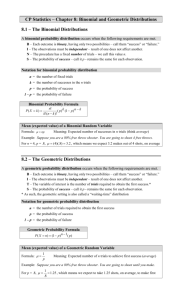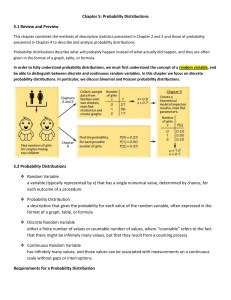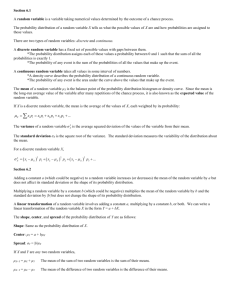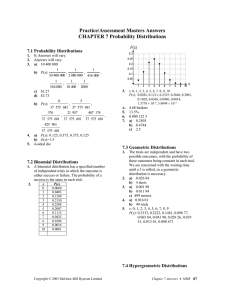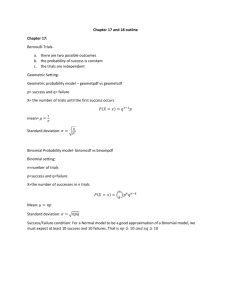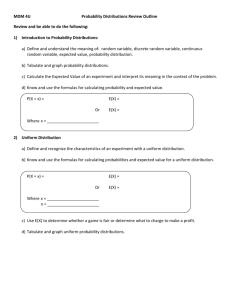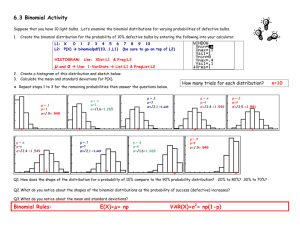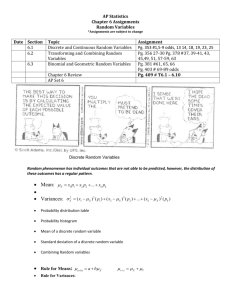S1 Key Points – Probability Distributions
advertisement
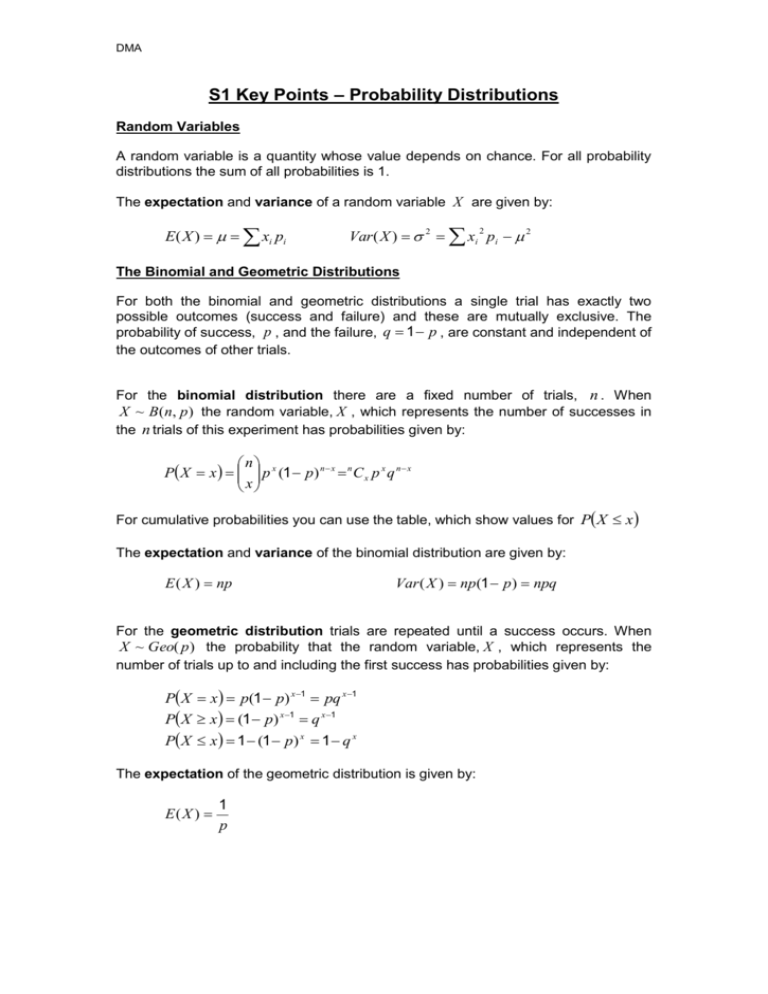
DMA S1 Key Points – Probability Distributions Random Variables A random variable is a quantity whose value depends on chance. For all probability distributions the sum of all probabilities is 1. The expectation and variance of a random variable X are given by: E( X ) xi pi Var ( X ) 2 xi pi 2 2 The Binomial and Geometric Distributions For both the binomial and geometric distributions a single trial has exactly two possible outcomes (success and failure) and these are mutually exclusive. The probability of success, p , and the failure, q 1 p , are constant and independent of the outcomes of other trials. For the binomial distribution there are a fixed number of trials, n . When X ~ B (n, p ) the random variable, X , which represents the number of successes in the n trials of this experiment has probabilities given by: n P X x p x (1 p) n x n C x p x q n x x For cumulative probabilities you can use the table, which show values for P X x The expectation and variance of the binomial distribution are given by: E ( X ) np Var ( X ) np (1 p ) npq For the geometric distribution trials are repeated until a success occurs. When X ~ Geo( p ) the probability that the random variable, X , which represents the number of trials up to and including the first success has probabilities given by: P X x p(1 p) x 1 pq x 1 P X x (1 p) x 1 q x 1 P X x 1 (1 p) x 1 q x The expectation of the geometric distribution is given by: E( X ) 1 p


